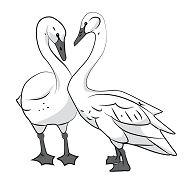Mother Nature’s urge to grow and reproduce is astonishingly unstoppable. It is evident this time of year in the garden. Plants that may have gotten a late start will flower when they are a much smaller size than they normally would have. Their purpose in life is to flower and produce seeds for the next generation, so they often accelerate the process in order to complete their mission before winter forces them into death. As temperatures fall and water and nutrients becomes frozen and no longer available, their ability to continue growing is halted.
The surge of hormones is what propels all species to ensure their survival through the sexual apparatus unique to its species. Nature has synchronized the timing of conception, birth, and hibernation in order to provide perfect balance in the symbiotic relationships among all flora and fauna species. The exceptions to this seemingly faultless system are the human being and their domestic pets. Why is that?
All of our domestic dogs were bred from their wild cousins, which birth only one litter per year. Domestic dogs, on the other hand, can go into “heat” as many as three to four times per year. Domestic cats, that are descendants of wildcats, are capable of producing three litters per year; while their ancestors produce only one. In the wild, not all the puppies or kittens will survive, as predation and hunger keeps the number of prey and predators in balance.
The biggest challenge to this perfect balance is the human being. Capable of becoming pregnant at any time of year, and with no natural predators to cull out the weakest, our population has exceeded seven billion. Our over population is exacerbated by the belief that quantity is preferable to quality. We keep babies alive through all manner of artificial means and we extend the life of the elderly with equally unnatural means.
For centuries, survival of the fittest helped the human population from growing exponentially. This brings a question to my mind. Is it possible, that prehistoric man, such as Neanderthals, were more limited in their ability to produce young? Instead of monthly cycles, did the females have only one or two windows of time, as most species, in which they could become pregnant? Why does this over-the-top ability to reproduce, only exist in domesticated and hybridized animal species? How does domestication contribute to the proliferation of a species? Certainly, the availability of food and shelter, combined with the lack of predators, has some impact; but these are questions worth asking. If the growth of our human population could be slowed in order to give our planet some time to recover; would not these questions be a good place to start?



